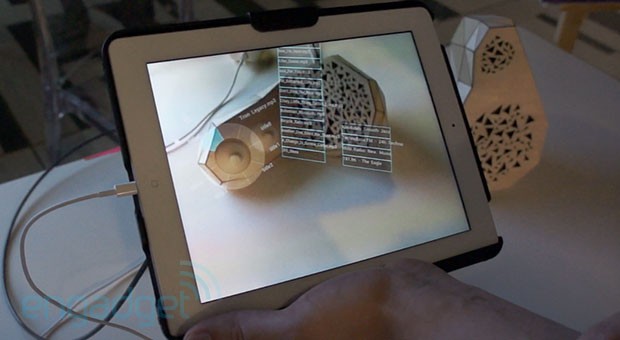The new MIT development allows you to "impose" an interface on real-world objects

Smarter Objects is a project of the MIT Media lab , in which engineers develop AR technology for interacting with real-world objects.
The Smarter Objects project is exploring a new way to interact with everyday objects. The system associates a virtual object with a physical one in order to provide a simple way of modifying and behaving this physical object, as well as interacting with other similar objects. As soon as a user points a smartphone or tablet at an object, the augmented reality application recognizes it and provides an intuitive graphical interface for programming its behavior and interaction with other objects. Once it is programmed, it is possible to interact with the object using a simple interface consisting of buttons, twirls, etc. Thus, Smarter Objects combine the adaptability of digital objects with a simple physical interface.
But as they say, it is better to see once than hear a hundred times.
At the Human Factors in Computer Systems conference in Paris, Valentin Hughen, responsible for the project, demonstrated what this technology is capable of. The presented system consists of a simple radio with a couple of “twists”, an external speaker and a special application for the iPad. As soon as the radio enters the frame of the Ipad camera, the navigation screen around the physical controls is displayed on the tablet screen, providing a convenient interface for navigating the playlist. It is also possible to activate an external speaker by drawing a line with your finger between it and the radio. The speaker can also be simply turned off by “cutting” the connection shown with your finger.
In addition, a promotional video is available online, in which other potential applications of Smarter Objects are demonstrated - for example, lighting control or a door lock:
Honestly, in its current form, this technology seems unsuitable for everyday use, because requires that the user constantly holds a tablet or other mobile device in front of him, which, you see, is not very convenient. But, coupled with the notorious Google Glass, this can turn out to be a truly revolutionary thing that will change our understanding of physical interfaces.
